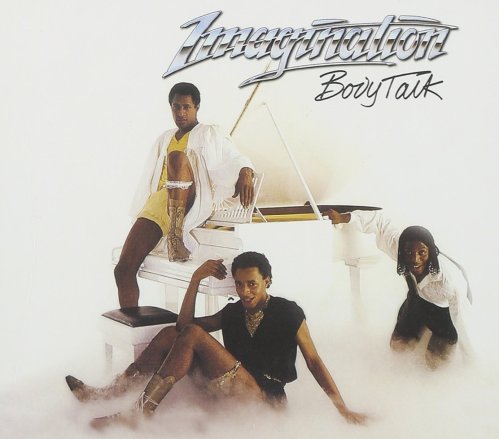
During the early 1980’s the UK was unleashing many R&B oriented acts such as Second Image,Level 42,Spandau Ballet and,yes even soon-to-be huge pop acts such as Wham! and Culture Club. There is one artist that stands out,not only racially but musically from the 80’s “Brit-Soul” pack. That would be Norman “Junior” Giscombe. In this review I am not only discussing the music but bringing attention to this sadly obscure artist and album. Junior himself was a UK “club kid” of Jamaican descent who dropped this debut in 1982 and had an (at least temporary) international sensation in “Mama Used To Say”,an uptempo contemporary funky soul delight.
While the percussion and horns are straight out of late 70’s Motown the message about the potency of both youth and old age was right on time and will strike a chord with any listener-son,daughter,parents,even grandparents perhaps. Although this album is primarily devoted to uptempo material the musicians,such as keyboardist and co-writer Bob Carter,bassist Keith Williamson and drummer Andy Duncan are probably unknown to the American R&B scene they show on this album they should’ve been a major force! Musically Junior’s sound borrows a lot similar influences as Michael Jackson and Stevie Wonder.
Same goes for Junior’s vocals,although in that arena there is also a very heavy Howard Hewett influence. What results however is an stripped down and very artful sound that makes use of a horn section at times-a sound that makes heavy use of other music styles,jazz and Caribbean rhythms in particular for an extraordinarily funky mix.”Love Dies” has a really stark and edgy feel for a dance tune-chilly,spare synthesizers and the clank of percussion abound.”Too Late” is another popular tune and,although presented on this CD as an edited version of the 7+ minute original vinyl.
I own that vinyl and that version is an incredible bass driven and dark look at the sorrows of poverty-with it’s minor chords and mournful vocals it is nothing short of chilling. “Is This Love” puts Junior even higher in the vanguard as he presents a pop-fusion style midtempo slow jam sung like melting caramel over a dreamy bed of electronics,showing that he learned that critical quality from Stevie Wonder (and to an extent Jan Hammer) how to draw real lyricism,melody and beauty from synthesizers. On “Let Me Know” we’re treated to a keyed up dance-funk jam straight out of the Michael Jackson school.
It features some melodic melismas that are so astonishing it’s surprising they’re even…singable.But Junior,with his great hiccupy phrasing pulls it off without a hitch. My personal favorite song here is “Down Down”,one of the most frightening emotional depictions of a dissolved relationship next to Marvin Gaye or Ray Charles. The music however is very close to the lyric-a mean dance beat splits apart every so often into near total psychedelic incoherence;the music genuinely sounds as if it’s spiraling down. Anyone who can pull that kind of thing off rates through the roof in my book!
“I Can’t Help It” (not the Stevie Wonder song sung by Michael Jackson) continues in the sound of “Mama Used To Say”,only with slightly less catchy results but it’s still an incredible jam no matter how it goes down. “Darling You (Don’t You Know)” is the only other slow jam type of song here,even still it’s very rhythmic.With it’s use again of minor chords on piano and dreamy synths and guitar lines it points to both the darkness and the light of love.
Now all this taken together one will hear this album and ask themselves why this album didn’t knock the socks off the charts on both sides of the Atlantic,never mind the possibility of a huge pop career for Junior. Well perhaps the arty,jazzy production of this album or the music industry recession during this time contributed to that. Even so this was Junior’s most successful and most remembered album,that is….if he is remembered hardly at all. His follow up,1983’s more abstract and reggae/funk inflected Inside Looking Out [LP VINYL] failed to gain a hit or any commercial attention,nor has it ever been released on CD
.Neither did a pair of excellent albums with the glossy pop-funk of 1985’s Acquired Taste,the freestyle dance style of 1988’s “Sophisticated Street or the highly new jack/hip-hop inflected ‘Stand Tall’ could turn heads around. So aside from duets with Kim Wilde and a contribution to the huge commercial success of the Beverly Hills Cop: Music From The Motion Picture Soundtrack soundtrack this artist is largely a footnote,if that outside Europe.That’s a fate very undeserved of an artist of this caliber. So with the reappearance of this album on CD we can now sit back,listen,groove and think what might have been.
Originally posted on January 17th, 2009
LINK TO ORIGINAL REVIEW HERE!


